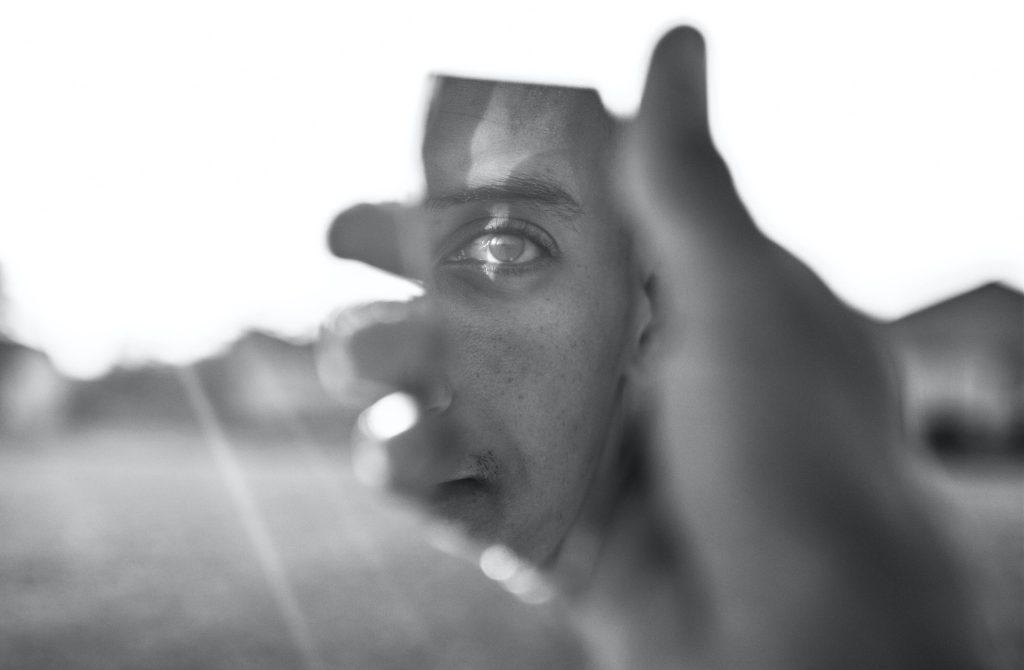Bishop Philip reflects on how Ash Wednesday is a moment to hold a mirror up to our own lives, that we might more fully encounter the life of Christ…
Ash Wednesday so often comes at a crucial turning point in the seasons, at that moment when we might just begin to allow ourselves to think that the worst of winter has past, but before we can really allow ourselves to think that the spring has truly started.
And if Ash Wednesday has that seasonal ambiguity about it, then that’s somehow appropriate because it also has a real spiritual ambiguity about it as well. T. S. Eliot in his poem itself entitled ‘Ash Wednesday’ says, ‘this is a time of tension between dying and birth’ And so it is. A time of tension between the death of winter and the birth of spring. A time of tension too between the death of Lent and the birth of Easter.
But for all that there is tension between them, these two belong together. There is no birth in spring without the death of winter, without things dying back, and lying fallow, while the earth itself takes in what has died that it may spring and flower again.
And there is no life in Easter without the death of Good Friday, when the earth itself did indeed take in to itself the one who had died that he might spring forth and flower again. And what is true for Jesus is true in no less a way for us: there is no life for us in Easter without the dying to ourselves of Lent.
Ash Wednesday brings us face to face with a reality which we would much rather, but really cannot avoid; the reality of our own mortality, of our own death; the reality of our own sin. This is a time of tension between dying and birth: but only as we face our dying and our sin can we find new birth. It is only as we die to sin that we can be born again to eternal life.
Lent, and Ash Wednesday in particular, force us then to take a long hard look at ourselves; to take stock of ourselves in a way that we might very well prefer not to do. They hold a mirror up to us and force us to face up to ourselves. In many ways there are a myriad other places we would rather look than there, in that mirror, and that is true of people of belief and faith at least as much as it is of anyone else.

In the story of the woman taken in adultery we find another group of people very eager to focus on anything and anyone other than themselves – and they too are busy doing all that in the name of their faith. ‘The teachers of the law and the Pharisees brought in a woman caught in adultery. They made her stand before the group and said to Jesus, “Teacher, this woman was caught in the act of adultery. In the Law Moses commanded us to stone such women. Now what do you say?” ‘
Such words while once seeming to belong to a dim and distant culture have a shocking relevance in our day, a day in which once again women are being stoned for adultery. But just as soon as we start to use this passage as a stick with which to beat ISIS, the Taliban and their ilk, we’ve somehow missed the point. For all that this passage is about the tendency of others to judge, as soon as we use it to judge others we fail to let it judge us, as we surely should. These selfish people, as selfish people often are, are utterly blind to their selfishness: they look at anything and anyone rather than look at themselves – but we mustn’t fall into that trap ourselves. This passage holds up a mirror to us and invites us to see ourselves in it.
But of course this story in not just about our tendency to judge others, it’s also about our tendency to recruit the Lord to our own cause, and to manipulate him to our own ends. The Pharisees in their own self righteousness were seeking Jesus’ endorsement for what in their minds simply had to happen. The law had been broken so justice had to be done. So surely this rabbi would endorse their position – and if he didn’t then he would just turn out to be suspect as they already believed him to be. The Pharisees and the teachers of the law were only interested in recruiting Jesus to their cause, they were not interested in being changed by him. They were not in the business of having their own presuppositions and carefully nurtured prejudices shattered.
So this story stands as a warning against the very human tendency to point the finger. Whenever we point the finger at anyone else we have to remember that three fingers point right back at us. Only if we are without sin can we point the finger. Only if we are without sin can we cast the first stone. And of course we’re not, and we can’t. We’re not without sin so we have to let the stones of judgement that we know we carry fall from our hands to the ground, and we must let the finger point to ourselves and to our guilt.
And this story stands as a warning against the very human tendency to recruit God to our own cause, to make him serve our ends, rather than us his. No-one really knows what Jesus wrote in the sand. But whatever he wrote the effect was to hold a mirror up to the Pharisees and the teachers of the law, and to make them face up to their own selfishness and the sin to which they would much rather be blind. The law of God is not there to bolster our prejudices, as they seem to think, but to challenge our inadequacies, and in fact to send us back to the only one who can help us in our weakness. We’re not in our supposed strength and independence to call God to us, to bolster our position; we are, in our very weakness and dependence and sin to run to him to find the strength and support we need, by giving ourselves wholly to him.
Looking in the mirror on Ash Wednesday is a painful thing to do for it reveals our selfishness, our foolishness, our weakness and our sin. But it is the only place to look, because only as we see ourselves as we truly are will we understand the Lord as he truly is. Only as we look at the reality of our mortality, will we awaken to the joys of his eternity. Only as we face the colds of winter will we be warmed by the springtime sun. Only as we die to ourselves in Lent, and on Good Friday, will we rise to new life with Jesus at Easter.
Watch the video here:




